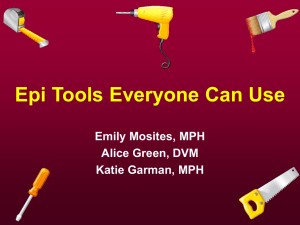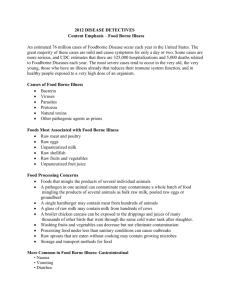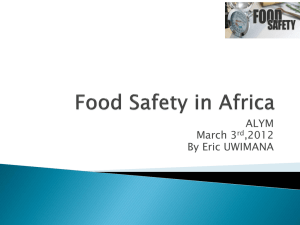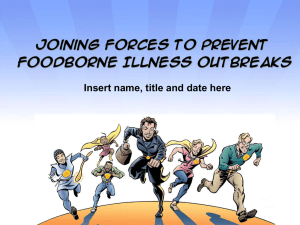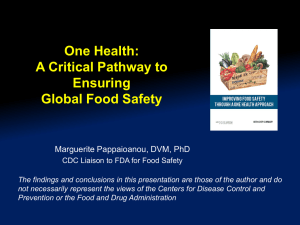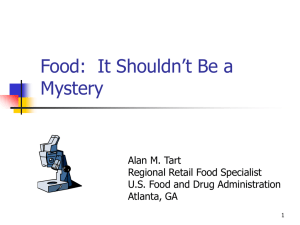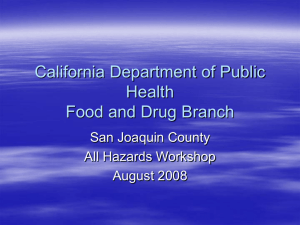Food and Environmental Sampling Kits
advertisement
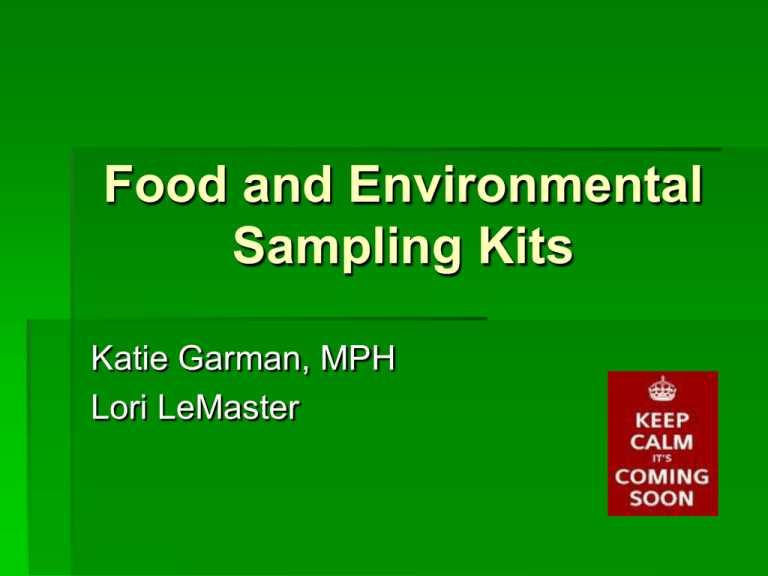
Food and Environmental Sampling Kits Katie Garman, MPH Lori LeMaster Why are the kits needed? Collect food/environmental samples without risk of contamination Food/environmental samples are sent to the Tennessee State Public Health Lab (SPHL) appropriately Keep in mind….. Epi and SPHL must be consulted first before food/environmental samples are tested Only outbreak-associated samples will be tested More than 2 people from different households Case linked to a multi-state outbreak Kit contents…. Cooler Insulated mailing boxes Sterile spoons Ice packs Sampling bags Swabs Sampling cups Gloves Food/Environmental Sampling Form (NEW!) Food/Environmental Sampling Form---DRAFT The form will capture Outbreak ID Contact information of the collector Organism to test for Date of collection Sample type/lot number Temperature Chain of custody Just in Time Training Review Kits sent to regional/metro offices 1-2 per office New Food/Environmental Sample Testing Form Collection Instructions How much to collect What information needs to be recorded How to send samples to SPHL Questions? National Voluntary Environmental Assessment Information System (NVEAIS) Purpose: To systematically collect, analyze, interpret and disseminate environmental data from foodborne illness outbreak investigations Information collected will allow programs to: Take food safety actions and assess effectiveness, Develop or modify program policies or regulations based on sound epidemiologic data, National Voluntary Environmental Assessment Information System (NVEAIS) Train environmental health specialists about environmental causes related to foodborne illness outbreaks, and Help prevent foodborne illness outbreaks associated with restaurants and other food venues (such as banquet facilities, schools, and other institutions). Why use NVEAIS? To help CDC public health determine and understand the primary causes of outbreaks Users will submit data about foodborne illness outbreaks, which will improve response to and prevention of future outbreaks Analysis of the data will help to determine how and why outbreaks occur. CDC will use data from NVEAIS to Recommend actions for food safety programs Share findings with food safety programs, food industries, and academia The recommendations and sharing of findings should increase effectiveness of food safety programs, increase food safety, and decrease foodborne illness When is NVEAIS Used? When a foodborne (FB) outbreak is suspected TN reports ~ 25 FB outbreaks per year Important to collaborate with Epi to determine transmission mode Not always black and white Is it Foodborne?? Susan’s highschool reunion is catered by Stinky’s BBQ shop. 25 people become ill with N/V/D 18-24 hrs after the reunion. EH interviews of Stinky and his staff reveal that three of Stinky’s foodhandlers had been ill with N/V/D one day prior to the reunion. The epi study did not reveal any significant food items. Is it Foodborne?? Amanda’s family reunion was held at Ingram’s Bar and Grille. 15 people became ill with N/V/D 18-24 hrs after the reunion. EH conducts and inspection and does not find any critical violations or ill foodhandlers. Epi interviews revealed Amanda’s 8 year old nephew was ill with N/V/D the day before the event. The epi study did not reveal any significant food items. NVEAIS Needs? Training? Data entry support? Other? Thank you!!
